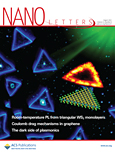 A materials scientist in Turkey has retracted a paper in the journal Tetrahedron after realizing that there was more to the compounds he was studying than he thought.
A materials scientist in Turkey has retracted a paper in the journal Tetrahedron after realizing that there was more to the compounds he was studying than he thought.
The article, “Novel donor–acceptor type thiophene pyridine conjugates: synthesis and ion recognition features,” appeared in April and was written by Fatih Algi, of the Laboratory of Organic Materials at Canakkale Onsekiz Mart University.
Here’s the notice: Continue reading Author retracts materials paper for irreproducibility








